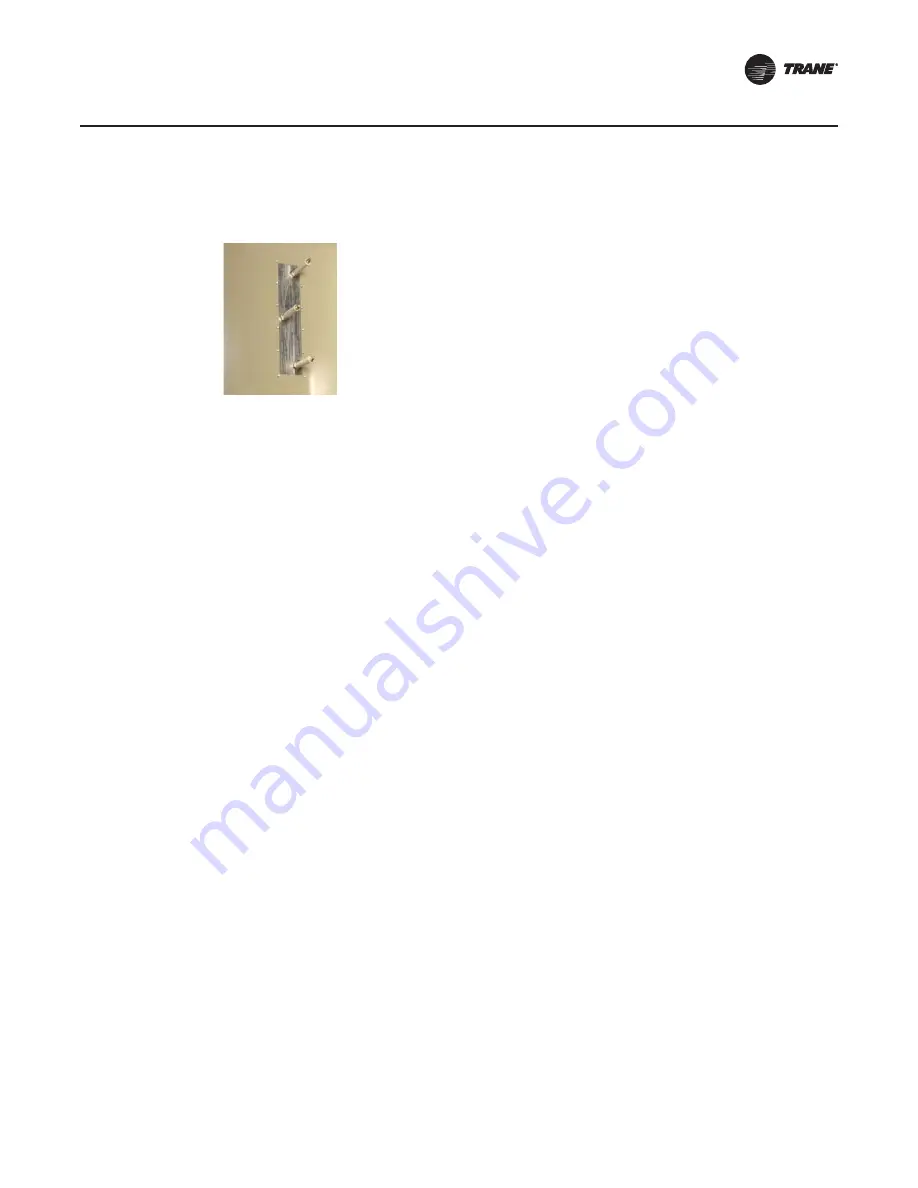
CTV-PRB004-EN
9
Motor Types and Voltage Classes
voltage motors. Medium-voltage motors are always form wound and you can see that the
insulation is thicker and the windings are more evenly spaced.
Medium-voltage motors (10–13.8 kV) have the same design and construction attributes as other
medium-voltage motors with some externally visible differences. Ceramic insulators and larger
spacing of the motor terminals are commonly found on typical 10–13. kV medium-voltage motors.
Internally, these motors are form wound and structurally similar to other medium-voltage motors.
The ceramic insulators combined with the larger spacing between the motor terminals help
prevent electrical arcing.
Higher voltage motors and starters are being used in large chiller plants where incoming line power
makes 10–13.8 kV accessible. In some cases, higher voltage chillers allow for the elimination of
electrical components with their associated space requirements and energy losses. In particular,
chiller installations with on-site or dedicated power generation, such as district cooling, higher
education, hospitals, industrials, and airports have opportunities for electrical distribution system
simplification and energy savings.
Benefits of 10,000–13,800 volts include:
•
No need for step-down transformer
•
No transformer losses
•
Higher uncorrected power factor
•
Reduced electrical design and labor
•
Reduced mechanical room space
Note:
Motors and starters at 10,000–13,800 volts typically cost more, and the motor efficiency is
lower than 2,300–6,600-volt motors.
Motors are available in specific power sizes, which are rated in kilowatts or horsepower. The
TOPSS™ computer software selection program selects the proper motor to meet the specific
cooling duty of the application.
Figure 3.
Ceramic insulators on medium-voltage motor (10-13.8 kV)
CTV-PRB004.book Page 9 Sunday, December 18, 2011 6:39 PM
























